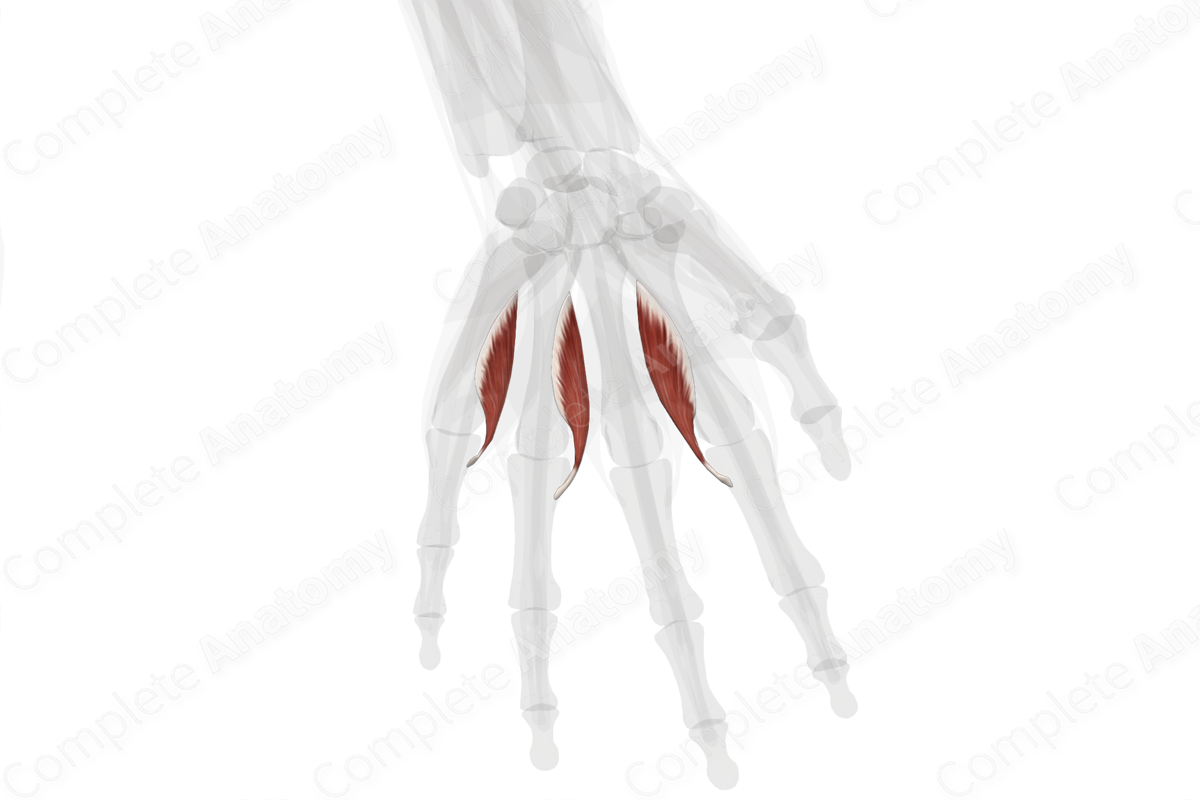
Description
The palmar interossei muscles are one of two subgroups of the interossei muscles of the hand, the other being the dorsal interossei. These muscles mainly act to:
- adduct the index, ring, and little fingers at their metacarpophalangeal joints;
- simultaneously flex the metacarpophalangeal joints and extend the interphalangeal joints of the index, ring, and little fingers.
In most individuals, there are three palmar interossei muscles in the hand and, from lateral to medial, they are numbered one to three. However, in some individuals, a fourth palmar interosseous muscle may be present along the thumb. In such individuals, these four palmar interossei muscles are numbered, from medial to lateral, one to four.
Related parts of the anatomy
Learn more about this topic from other Elsevier products
Hand Muscle

39,40 The lumbricals are a group of intrinsic hand muscles that originate on the flexor digitorum profundus (FDP) tendons.




